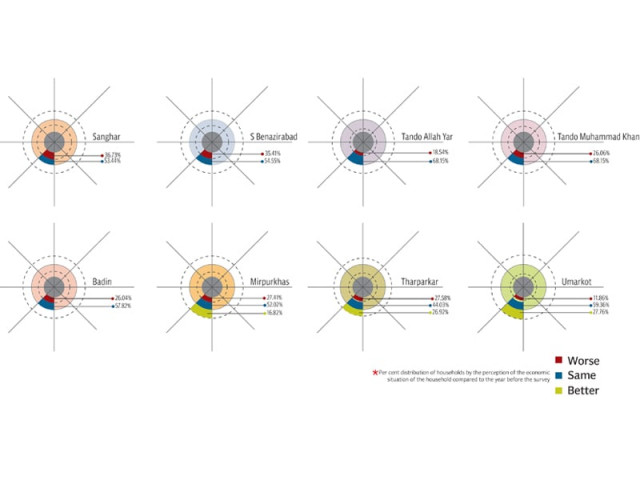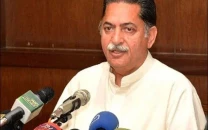Survey provides snapshot of what life was like in Sindh before the flooding
The Federal Bureau of Statistics examined the conditions in a sample of households.

Reports on the flood-hit areas of Sindh have dominated headlines and space in newspapers for weeks now. What hasn’t been talked about much, if at all, is what life was like before the rains. As one can imagine, it wasn’t much better.
The Pakistan Social and Living Standards Measurement Survey 2010-2011, conducted by the Federal Bureau of Statistics, offers a good understanding of what life was like for people in the districts that have been impacted the most by this year’s floods.
The districts of Benazirabad, Tando Allah Yar, Tando Muhammad Khan, Badin, Sanghar, Mirpurkhas, Umerkot and Tharparkar have been chosen to highlight the conditions there before the August monsoon downpour.
Of a variety of markers to determine social and living standards, a few key indicators were chosen and presented for these districts.
The survey is the sixth so far and the work will continue to 2015 in order for the government to be able to better gauge where to put its development money.
A total of 76,548 households in 5,413 sample villages were surveyed across Pakistan to assess how people were doing in the sphere of education, health, water supplies and sanitation. The fieldwork was carried out between July 2010 and June 2011, right before the flooding hit.
In this part of the picture, we present a selection of the data from Sindh where a total of 19,728 households were surveyed.
So, for example, if it shows 2% of households in Tharparkar without a toilet, it means 2% of all households surveyed and not for every house in the district.
Perception of economic situation
Residents of Sanghar and Benazirabad believe that their economic conditions have worsened over the past year. Few people across the districts described their situation as ‘better’ with the exception of some people living in Umerkot and Tharparkar. A major chunk of the sample size, above 50% in all districts, barring Tharparkar, said economic conditions were the ‘same’ as before. Nearly 58% of respondents in Badin, which has been hit the hardest by floods this year, also said economic conditions had remained constant in the past one year. But the floods, and the ensuing damage to property and crops, have changed that constant.
Household satisfaction
Schooling scored the highest in terms of people’s satisfaction of services, ranging from 34% to almost 60%. Mirpurkhas reports the highest literacy rate with 53% of the population (10 years and older) classified as literate. Tando Mohammed Khan ranks lowest at 36% but it is female education in Badin which is depressingly low at 22%.
Rooms, motor pumps and toilets
Ranking lowest in the percentage of households with motor pumps and highest in those without toilets is Tharparkar district. This should not come as a surprise for the desert area which has a trend of using man-made wells to store drinking water because of low rainfall patterns. On the other hand, the district also boasts of households with the most number of bedrooms (between two and four) compared to the other areas surveyed.
Meanwhile, just three per cent of households in Tando Allahyar are without toilets while 62% have hand pumps and over 55% have between two and four bedrooms.
Published in The Express Tribune, October 10th, 2011.



















COMMENTS
Comments are moderated and generally will be posted if they are on-topic and not abusive.
For more information, please see our Comments FAQ